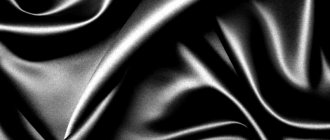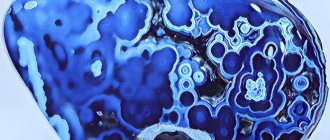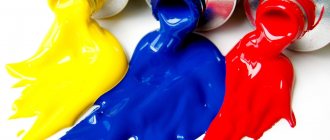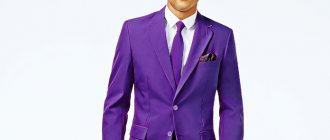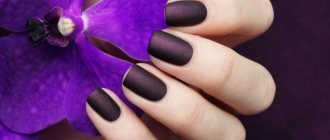Red color has a more active influence in human psychology than any other color. This impact is both positive and negative. It excites, motivates to action, gives strength and energy. And at the same time it causes aggression and irritation. Typically, red is the favorite color of those who strive for leadership positions. Who else likes red? How to use it correctly in life?
A little history
The color red in color psychology and its shades have always played an important role in people's lives. There is several evidence for this:
- The paintings on the rocks are often done in red.
- Some African tribes smear their bodies with red in their rituals, considering this color to be magical. The leader wears the same outfit.
- In ancient times, the color symbolized Mars, strength, masculinity, and belligerence.
- In Western Europe it is a symbol of power.
- In Ancient Egypt, red was considered sacred. Therefore, only people with authority could use it.
- In ancient times, red meant love.
- The Slavs had a wedding dress of exactly this color.
- In Christianity, red symbolizes the blood of Christ.
Particular importance is attached to color in Europe. Here he talks about power and strength.
Color groups
Colors are divided into groups. They can be hot, warm, cool, cold, or neutral.
The hot group includes red, orange, and deep yellow colors. They really warm you up: as experiments have shown, when staying in a room with an abundance of “hot” colors, a person feels the temperature 1-2 degrees higher than the objective one.
Hot
Hot colors in clothes are evidence of expression, a symbol of a confident, ambitious character. The positive aspect of hot tones is love of life, activity, emotionality; negative – hot temper, authoritarianism, aggression.
Warm colors are brown, peach, pale yellow, beige, pink. They have a gentle calming effect and encourage contact.
Warm
People who are responsive and delicate, easy to communicate with, are drawn to such colors. The positive aspect of warm colors is optimism, friendliness, sociability; negative – the inability to insist on one’s own, the desire to see the world around us through rose-colored glasses.
Cool colors - blue, blue-gray, blue-violet (indigo), rich blue-green. They cool, suppress emotions, calm.
Cold
It is believed that cool colors are chosen by people who are reserved (or those who want to appear so), dispassionate, and reserved. The positive aspect of this group is organization, orderliness, neatness, the negative aspect is dryness, callousness, pedantry.
Cool colors include blue, light mint and turquoise, smoky gray. They calm you down and make you feel carefree.
Cool
The positive aspect of these halftones is their slight relaxing effect, and the negative aspect is their frivolity and frivolity.
Neutral colors include light gray, gray beige, lilac, and muted green. They are perceived as neither hot nor cold, they are essentially ambivalent.
Neutral
Clothes of this color are preferred by people who do not want to “open their cards” or be overly friendly or hostile in the eyes of others.
A special place in the palette belongs to two antagonists - white and black.
White is an allegory of purity, honesty, sincerity, a symbol of a new leaf. The opinion of a man in white clothes often seems undeniable, the ultimate truth. Perhaps that is why a white men's shirt and a white women's blouse are the No. 1 items in a business formal wardrobe. Black is an emblem of power, strength, will. Together, black and white are a classic union of truth and strength, openness and inaccessibility.
Significance in psychology
So, red color in psychology is strength, energy, sensuality, activity, aggression and sexuality. It motivates a person to action, excites. But at the same time it reminds us of blood.
At different times, color was given different meanings. For some, it symbolized love. For others, he spoke of war and hostility. It turns out that this spectrum conveys all emotions, from love to hatred.
Positive properties of the color red in psychology:
- perseverance;
- persistence;
- the ability to defend one’s opinion and position;
- desire to be a leader;
- dynamism.
The disadvantages include:
- cruelty;
- lust;
- stubborn character;
- intolerance;
- tendency to violence;
- destruction.
In addition to the main red color, its shades are also important in psychology. There are a number of examples:
- Burgundy. It is a combination of red and brown. Speaks of conservatism and self-confidence. People who like this shade are stubborn, assertive, but at the same time calm. They have no temper or aggression. An excess of burgundy is always heaviness and oppression.
- Scarlet color. Stronger than red in sensuality, sexuality, emotionality. It gives a person energy, but at the same time makes him act thoughtlessly and impulsively. Symbolizes carelessness.
- Crimson means sincerity. The person who loves him can be trusted. He charges with optimism and confidently moves towards achieving his goals. But at the same time he is very unpredictable.
- Fiery red. Gives people willpower, helps them cope with life's difficulties and trials. But sometimes all this leads to emotional exhaustion.
- Pink. This is purity, love, youth. Those who prefer this shade are vulnerable, touchy people. However, they quickly forgive and forget about insults.
- Dark red. Quite an interesting shade, meaning condescension, which borders on cruelty and even cynicism.
Those who love red in clothing, interior design, and accessories are natural leaders. It is difficult to piss off such people; they do not react to criticism and comments, but confidently move towards their goals. Achieving them is a common occurrence for them.
For men
What does the color red mean in the psychology of men? It is associated with sensuality and sexuality. It’s not for nothing that many representatives of the stronger sex prefer girls in red dresses. They are ready to do anything for them. But at the same time, they are not aware of the effect of color on their subconscious and often deny it.
Red can be called a masculine color. It denotes the raw energy inherent in confident, stubborn individuals. They persistently pursue their goals, but at the same time sometimes show cruelty.
For women
Women who love the color red are strong people who value their freedom and personal boundaries. Their actions are guided solely by their own desires and interests. And they want others to take them into account as well.
Despite such rigidity of character, these representatives of the fair sex are passionate, soft, and loving. They love life, enjoy every pleasant moment, try to live in such a way as not to miss a minute.
For children
According to psychology, if a child draws in red, there is nothing wrong with it. In the first years of life, he often chooses bright colors, such as pink or yellow. And only later does he pay attention to green, blue, etc. Often preferences depend on gender.
Children who highlight the color red among others are open and active. They will not adhere to generally accepted rules, but will establish their own. They also prefer to act against their parents' words. That is why their upbringing is often associated with difficulties.
Psychologists recommend not decorating children's playrooms in red. Its excess has a bad effect on the immature psyche.
Brown
Brown is Ryan Gosling's favorite color. The actor often wears a total look in brown tones. Psychologists believe that this is the choice of conservative men who stand firmly on their feet. Such gentlemen are smart and rational: they do not like spontaneity and adventure. The main thing in life for them is financial stability and a strong home front, that is, a happy family.
Ryan Gosling
Where is it used?
Red color is often found in clothing and, for example, in the interior of residential premises.
Cloth
According to color psychology, the color red in clothing speaks of a person’s desire to attract attention and be visible. A person’s character clearly shows courage, determination, fortitude and a desire to occupy leadership positions.
Red clothing indicates optimism, passion, and emotionality. However, it can also create a negative impression. Therefore, it is not recommended to wear such things to an interview with a potential employer.
Interior
How to correctly use red in interior design? There are several recommendations:
- An excess of red provokes attacks of aggression. Therefore, it is better to avoid using large objects and elements of this color. Small details, on the contrary, will create a feeling of comfort.
- Scarlet color is contraindicated for people who suffer from high or low blood pressure.
- The right combination of shades will help make the room a place where you can relax and recharge with vital energy.
- Red is associated with solemnity. Therefore, it is recommended to use it when decorating rooms for various celebrations.
You should not use shades of the red spectrum in the bedroom, nursery or bathroom. These rooms should provide an opportunity to relax and calm down, not perk up.
Grey
Gray color is often chosen by Libra men because it is a symbol of stability and balance. For a lover of gray, the right balance in everything is important.
To achieve this, the man in gray demonstrates a strict and firm character. It may even seem to you that he is stingy with emotions and taciturn. But this is a misleading impression. He’s just used to proving love not with romantic words, but with deeds. For example, he will take on some of your financial worries.
Rami Malek
Combination with other colors
What does red mean in combination with other shades?
- Gray - impulsiveness, rash actions, secrecy, often irresponsibility.
- Blue - fullness of emotions, unification with other people, the ability to interact with other people. Harmony in the sexual sphere.
- Green - purposefulness, initiative.
- Orange - harshness, irritation.
- Yellow - learning something new, gaining knowledge. Warmth, joy, active desire to interact with the outside world.
- Black - excessive drama in character, exaggerated desires, danger.
- Violet - an acute reaction to what is happening around, sensitivity to external stimuli.
In combination with brown, red denotes sensual satisfaction and self-indulgence.
Who loves red
People who prefer the red spectrum in everything have the following character traits:
- Desire to control others.
- Selfishness, stubbornness, cruelty.
- Love of adventure, desire for new experiences.
- Optimism.
- Sociability, originality, creativity, determination.
- Irritability, short temper.
- Power, the desire to keep everything under control.
- Energy, active life position.
Red appeals to women who want to dominate in relationships. They are impulsive and often show aggression.
Those who do not like this color are in most cases not confident in themselves. Such people prefer to be alone; they are afraid of quarrels and conflict situations.
If a person used to like the color red, but now doesn’t, we can talk about moral and physical exhaustion.
How does it affect the psyche?
All shades of the red spectrum have a stimulating effect on humans. Moreover, this affects both the subconscious and mood.
This color also provides a surge of vital energy. But not for long. The effect will quickly disappear, leaving room for a feeling of fatigue. To achieve long-term results, it is better to choose calm, warm tones.
Red color is irritating. In this state, people are capable of rash actions. But sometimes this leads to them doing what they have long wanted to do, but could not decide. However, it is worth remembering that using this method can cause uncontrollable outbursts of anger.
An excess of red provokes the development of anxiety. And if a person has a sensitive psyche, then panic attacks.
What does shortage lead to?
If we talk about the emotional state, then the lack of shades of the red spectrum leads to neuroses and headaches.
Positive, negative influence on men and women
The influence of the color red on the psyche of men and women can be used. It can invigorate and increase self-confidence. This shade helps you make the right decision, stimulates activity and increases your desire to achieve your own goals. It has a sexually stimulating effect on men.
But red also has a negative effect. It can excite so much that it will lead to aggression, irritability, and temper. Too much red drains a person, exhausting and tiring. Psychologists do not recommend wearing clothes of this color when depressed or during stress.

